| Country: | Germany |
| Period: | Romantique |
Biography
Richard Strauss was born on 11 June 1864, in Germany (Munich), in the family of Franz Strauss, the main horn player at the Munich Court Opera. Richard received a profound, but classic musical education in his youth, offered by his father. Strauss would start writing at the age of 6 and proceed his music endeavors until death.
As a boy he was fortunate enough to have possibility to witness the rehearsals of the Court Orchestra, and Richard also received some music instruction in spheres of composition and theory from the conductor’s assistant there. In 1874 he heard the operas of Wagner for the first time. These were Siegfried, Lohengrin and Tannhäuser. The influence of his music was strongly felt, but in the family of Strauss Wagner’s music was considered to be inferior, and it was not until sixteen that the composer obtained the score of Tristan and Isolde. In his later life Strauss wrote and said that he was not biased against Wagner and regretted his father’s attitude to the composer.
In 1882 Strauss joined Munich University, where the young man studied art history and philosophy, but not the theory of music. One way or another in a year’s time he went to Berlin to work as an assistant of the famous conductor Hans von Bülow. He managed to study in Berlin briefly before he took the post, and when the man retired in 1885 Strauss undertook his responsibilities. The compositions of this period are written in the conservative style of Felix Mendelssohn or Robert Schumann, following the approach of his father. The Horn Concerto No. 1 composed in the period between 1882 and 1883 is a bright representation of hid technique and is often played nowadays.
Richard married Pauline de Ahna in 1894. She was a soprano singer and most of composer’s works were written for soprano. The woman enjoyed the reputation of being outspoken and eccentric, but their marriage was a happy one and Pauline served as a major source of inspiration to the composer. From his earliest compositions to his 1948 Four Last Songs, Strauss gave preference to soprano voices.
The composer decided to alter his style after the acquaintance with Alexander Ritter, the renowned violinist and composer, and a distant relative of Strauss. Ritter persuaded him to abandon his current conservative style and turn to mire progressive tone poems; that was he who introduced Strauss to Richard Wagner’s essays and works of Schopenhauer. The composer would conduct Ritter’s opera, and after the composer’s death Ritter would write the poem Tod und Verklärung.
Strauss’s maturity is already seen in his later pieces, such as the poem Don Juan. He proceeded with other poems, such as Death and Transfiguration, Till Eulenspiegels lustige Streiche of 1894–95, Don Quixote (1897), Also sprach Zarathustra, Sinfonia Domestica, An Alpine Symphony, and Ein Heldenleben of 1897–98.
In the late 19th century, the composer turned to opera. Strauss’s first attempts Guntram (1894) and Feuersnot (1901) were unsuccessful ones, and are criticized for being obscene and obscure. In 1905 Strauss composed the opera which is considered to be his masterpiece. The opera Salome written on the basis of Oscar Wilde’s play provoked extremely passionate reaction of music fans. The première became a success and put an end to Strauss’s financial difficulties, the performers were called by the audience 38 times. But its premiere at the New York Metropolitan Opera resulted in public outcry, so in the long run it was declined after the single performance. This happened largely because of the Wilde's reputation of "immoral" he enjoyed at that period. Some claim that it was also due to the use of dissonance, so unusual for opera performances. The opera itself was a general success and the revenues allowed Strauss to finance his Garmisch-Partenkirchen house.
Elektra was the name of his next opera, the dissonance taken even further. During his work Straus collaborated with Hugo von Hofmannsthal, and would proceed to work with the poet on other works. To the works which brought Strauss major success and love of the audience belonged Der Rosenkavalier composed in 1910. Here the composer would moderate his music language and therefore produce such an outstanding work. The composer set himself to produce operas on regular basis until 1940. Among the poems of the period there were Ariadne auf Naxos (1912), Die ägyptische Helena (1927), Die Frau ohne Schatten (1918), and Arabella (1932), written on the basis of Hofmannsthal’s poetry; as well as Intermezzo (1923), Die schweigsame Frau, Daphne (1937) and Friedenstag (1936), Capriccio (1941) and Die Liebe der Danae.
Strauss also produced live-recording piano music pieces for the so-called Hupfeld system, each of which is still audible.
Strauss’s chamber works and solo include compositions in a conservative style, not all of which survived; a rare string quartet, the 1887 sonata in E flat for violin; as well as a number of late pieces. Not many (only 6) of his works dated after 1900 are written for chamber ensembles, and 4 are in fact arrangements of music pieces for the operas. The Allegretto in E for piano and violin, is dated 1940.
There are more works written for the instruments with orchestra or for solo instrument. Among the most famous are two horn concerts, which are in fact included in the standard repertoires of the horn soloists; a concert for violin; a Burleske for orchestra and piano; Don Quixote, his tone poem for orchestra, viola and cello; an oboe concerto ( which was instigated by John de Lancie, an American oboist and soldier, the acquaintance Strauss made after the end of war); the Duet-Concertino written for orchestra, clarinet and bassoon, and it belonged to the last works of Strauss. The composer represented the characters via sounds, so the princess was represented by clarinet and a bear by the bassoon; and when the heroes dance, the animal converts into the prince; thus the Duet-Concertino acquired an extra-musical background plot.
Critics are by no means unanimous of whether or not Strauss cooperated with the Nazi Party when it came to rule in Germany. Some believe that the composer was apolitical, pointing out that he never backed the Nazis. Nevertheless, he was an official composer of the Third Reich. To the noted musicians who disapproved of Strauss’s conduct belonged Arturo Toscanini, who would famously say that he would take off his hat to Strauss- composer, and immediately put it back to Strauss- the man.
In November 1933 Goebbels appointed Strauss to the president of Reichsmusikkammer, the Music Bureau. The composer accepted the post, but remained apolitical in his thoughts; his decision had been criticized as being naïve. Strauss wrote the famous Olympische Hymne for Summer Olympic Games of 1936. One of his intentions at this post was to protect from persecution one of his relatives Alice. She was his daughter-in-law and a Jew. In 1935, the composer was compelled to resign after the incident with Stefan Zweig’s wife. The point was that he being a Reichsmusikkammer president refused to exclude from the playbill of for Die schweigsame Frau the name of the librettist, his friend’s wife. He wrote a letter to his friend where he criticized the Nazis’ decision and aimed to support his friend. But the letter was intercepted, and Gestapo decided to free Strauss from his post as Reichsmusikkammer president. Nevertheless, when his composition was performed at the Olympic Stadium in Berlin he was no longer president.
In 1938 Strauss produced an opera which consisted only of one act, and described the events of Thirty Years' War. It was a hymn to freedom and peace, and implied critical tones against Nazis. It was a pretty dangerous attempt and Strauss is even considered to be brave taking into account the pre-war situation in the country. The opera represents contrasts between enslavement and freedom, struggle and peace, darkness and light, some regard this work to relate more to Fidelio’s works than to other Strauss's operas. Its production was ceased after the beginning of World War II.
Strauss had to use his connections (for example, an Intendant Tietjen) in order to ensure safety of his daughter-in-law when she was put under arrest in 1938. Some suggest that he also aimed at protecting other Jewish colleagues and friend. One way or another, he didn’t leave any specific record of his attentions and regards concerning about Nazi antisemitism, therefore his motivations are of doubtful nature and are conjectural. His actions as an official were in fact something midway between dissidence and collaboration, and only in his music did he show his dissident nature (for example, the drama Friedenstag.)
In the middle of the war, Strauss returned with his family to Vienna, where it was easier to protect Alice and children, with the assistance of the Gauleiter of Vienna, Baldur von Schirach. Unfortunately, even the composer’s reputation and connections did not prevent the imprisonment of Alice; at the beginning of 1944, in the period of Straus’s absence, the composer’s son and his daughter-in-law were imprisoned by the Gestapo. Only his personal intervention helped to save them and they were kept in prison only for a fortnight. The two remained under arrest in Garmisch till the end of the war.
The composer finished greatest catastrophe in 1945. It is conventionally believed that it was composed to commemorate the bombing of the famous Munich opera house the Hoftheater. Strauss would mourn over the event and call it the greatest catastrophe of his life. There are scholars who insist that the plot of greatest catastrophe is a famous poem by Goethe's.
Americans apprehended Strauss in Garmish in April 1945. While he was descending the staircase the composer said to Milton Weiss the US Lieutenant and a musician, that he was the man who composed Salome and Rosenkavalier. And the Lieutenant had nothing else but nod in recognition. The sign 'Off limits' was placed on his lawn to protect the composer against bombing.
Ronald Harwood, the English playwright designed his play Collaboration (2008), where he displayed his sympathy to Strauss. The themes of this play interweave with more favorable treatment by another playwright Wilhelm Furtwängler. Both writers introduced many similar characters in their plays.
Strauss produced his last work in 1948. It was evidently inspired by Kirsten Flagstad and was called Four Last Songs for orchestra and soprano. The first performance was performed by Kirsten Flagstad and its record (though of very poor quality) is still available upon request. To his best known songs belong Zueignung, Allerseelen, Morgen!, and Cäcilie. Nowadays Strauss's melodic and harmonic language is considered somewhat old-fashioned if compared to the younger composers. One way or another, his compositions, particularly tone poems and songs have always enjoyed popularity among wider public and performers. Strauss regarded himself as not the first-rate composer, but the first-class second-rate artist.
Sixty-eight year old Strauss died in Garmisch-Partenkirchen on 8 September 1949. Georg Solti ventured to arrange his 85th birthday party and direct an orchestra at Strauss's burial.







![Russian legends - Gidon Kremer [10 CD]](http://static.classicalm.com/repository/collection-cover/small/273-img1318873589669975.jpg)
![Deutsche Grammophon Classic Gold [CD 2 of 3]](http://static.classicalm.com/repository/collection-cover/small/1315-img1361382127512512.jpg)



![The Top 100 Masterpieces of Classical Music 1685-1928 [CD10of10]](http://static.classicalm.com/repository/collection-cover/small/1362-img1372449071864441.jpg)

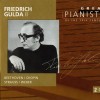



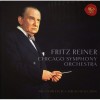





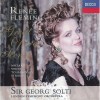


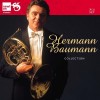





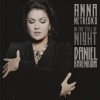





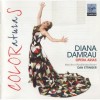





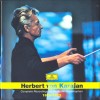












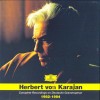








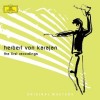



![Anthology of the Royal Concertgebouw Orchestra: Live the Radio Recordings 1960-1970 [CD6]](http://static.classicalm.com/repository/disk-cover/small/3443-img1395222424366205.jpg)






![Rita Streich - The Viennese Nightingale [CD 5 of 8]](http://static.classicalm.com/repository/disk-cover/small/3038-img1372359002122453.jpg)

![Rita Streich - The Viennese Nightingale [CD 8 of 8]](http://static.classicalm.com/repository/disk-cover/small/3041-img1372431542417563.jpg)







![Wilhelm Furtwaengler 1942-1944 Vol. 2 [CD 4 of 5]](http://static.classicalm.com/repository/disk-cover/small/2974-img1365441375662175.jpg)
![Wilhelm Furtwaengler 1942-1944 Vol. 2 [CD 5 of 5]](http://static.classicalm.com/repository/disk-cover/small/2975-img1365442883625048.jpg)



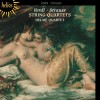
























![The Heifetz Collection, Volume 2 [3 CD]](http://static.classicalm.com/repository/disk-cover/small/717-img1315129517717299.jpg)
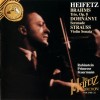

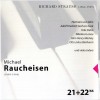
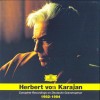

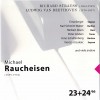
![The Heifetz Collection, Volume 46 [2 CD]](http://static.classicalm.com/repository/disk-cover/small/1001-img1318023469472305.jpg)


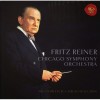








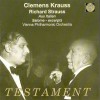































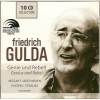
![Strauss - Daphne [Fleming, Bychkov]](http://static.classicalm.com/repository/composition-cover/small/20023-img1403259482131921.jpg)










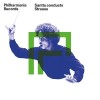





































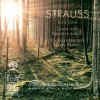













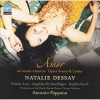







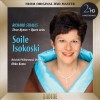









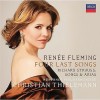






















![Strauss conducts Strauss [DG]](http://static.classicalm.com/repository/composition-cover/small/21212-img1411907844632523.jpg)





























